| Home |
| Acknowledgments |
| Conventions |
| Glossary |
| Maps |
| References |
| Links |
| Articles |
| Thumbnails |
| Species
list |
| Family |
| Next
species |
Additional Photos

side
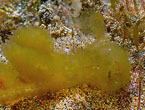
rhinophores
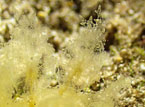
cerata detail
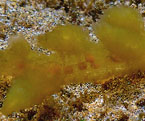
gizzards

pale
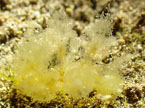
young
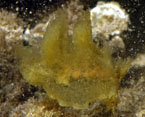
swimming
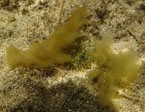
with alga

resting

Melibe sp. #1

| Maximum size: about 90 mm. Identification: This is a semi-translucent, golden-brown species with a small oral hood. (Note 1) The cerata are spindle-shaped with densely tuberculate surfaces and a few short, irregularly branching apical processes. The apical processes are decorated with brown and cream flecks. The rhinophore crests are broad and largely transparent with a few golden-brown flecks. The gizzards are light brick-red and there are short processes on the body. Faint brown patches may be visible on the body and cerata when they are flexed for swimming. Natural history: The first Melibe sp. #1 was found in a wave-washed tide pool at Maalaea Bay at a depth of < 1 m (< 3 ft). Since then, multiple animals have been found at a depth of 7-9 m (22-31 ft) in a patchy Halimeda kanaloana bed at the same site. All appeared very similar to a fussy alga that was present in their vicinity. (Note 2) Distribution: Maui. perhaps, known from Indonesia? Taxonomic notes: It may be the species listed as "Melibe sp. #1" in Gosliner, et. al. (2018). However, the processes are shorter and the rhinophore crests larger in the Hawaiian animal. It was first recorded in Hawaii from Maalaea Bay, Maui by Karolle Wall on Feb. 9, 2019. Photo: Karolle Wall: about 90 mm: Maalaea Bay, Maui; Feb. 9, 2019. Observations and comments: Note 1: All subsequent animals found in deeper water were paler than the first one that was found in the shallows. Note 2: Perhaps, this species is mimicking the alga (Chrysonephos lewisii?) shown next to it in this photo? |
| Thumbnails |
Species
list |
Family | Next species | Top |